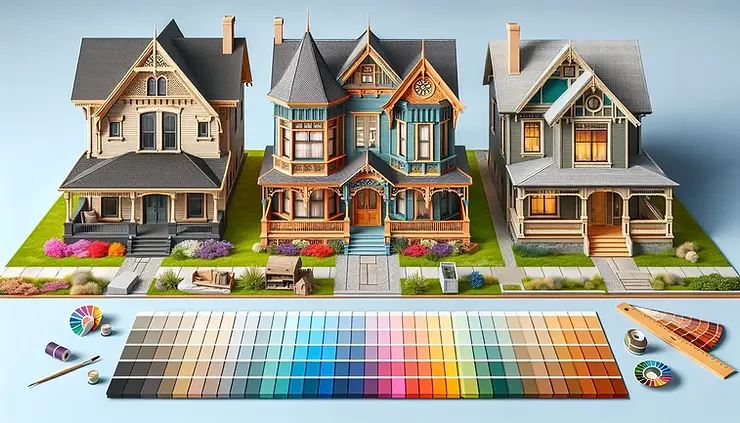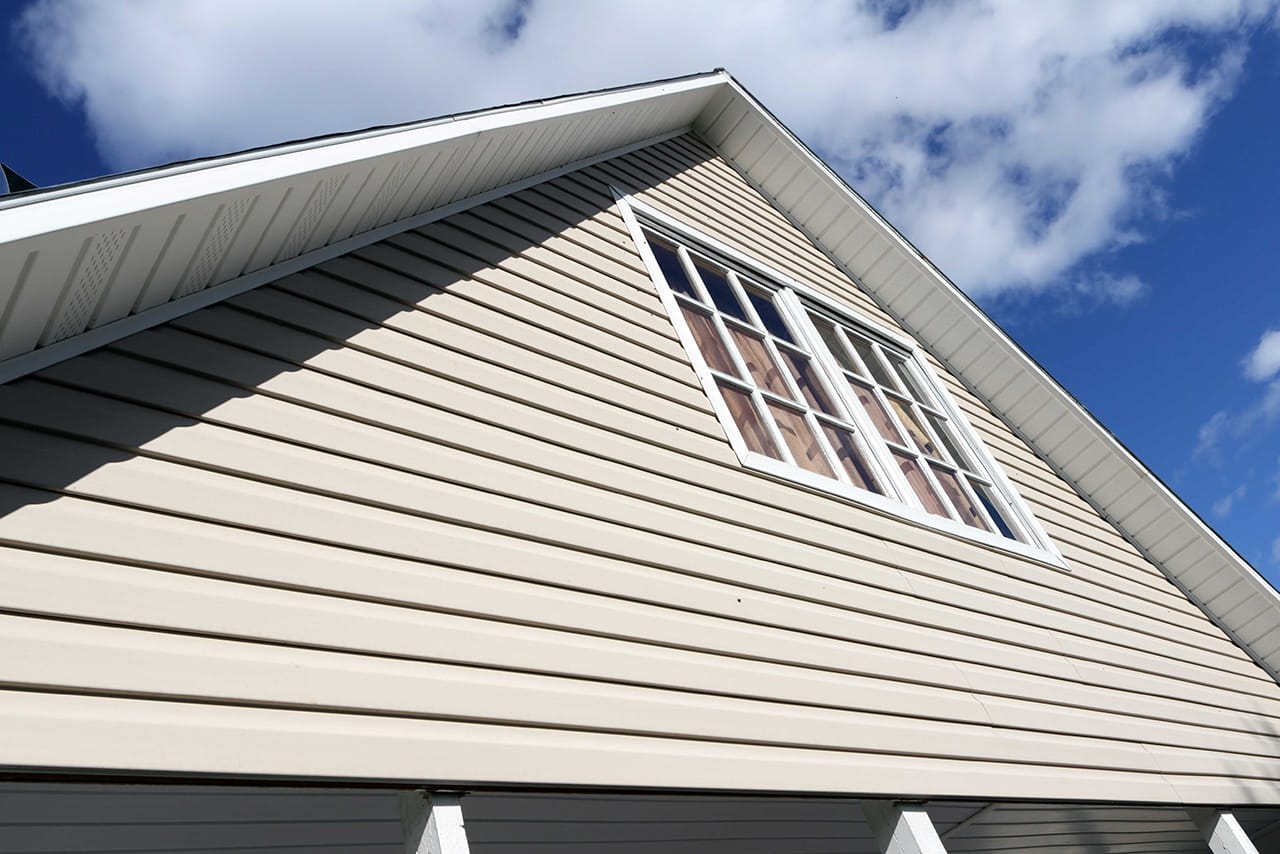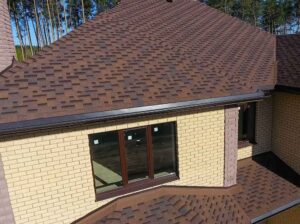Introduction to Siding Colors and Home Aesthetics
Choosing the right siding color is more than just picking a shade you like. It requires considering how that color will match your home’s architectural style and the message you want to communicate. Homes, like people, have personalities, and the siding color is like the outfit they wear. Do you want your home to stand out or blend in? Do you prefer a traditional look, or are you aiming for something more modern? The color you choose sets the tone. For instance, classics like white or beige work well with almost any style, giving a clean, timeless appearance. On the other hand, bold colors like deep blue or green can make a statement and highlight unique features of your home. Remember, siding is a long-term commitment. It’s not just about what’s trendy; it’s about what works for your home’s architecture and the message you want to send to anyone who sees it.

Understanding Your Home’s Architectural Style
Knowing your home’s architectural style is the first big step in choosing the right siding color. Think of your home’s design like it’s telling a story – what era does it whisper? Is it a quaint Victorian, a sleek Contemporary, or maybe a cozy Craftsman? Each style has its own color palette that historically matches it. For instance, Victorian homes often flaunt bold, rich colors like deep blues or greens, while Craftsman styles stick to earthy tones, and Contemporary homes lean towards neutral or monochromatic schemes. It’s not just about picking a color you like; it’s about picking a color that fits your home’s character. After all, you wouldn’t wear a tuxedo to a beach party, right? Same goes with your home – match the siding color to its architectural style to ensure it looks its best.
The Psychology of Color in Home Design
Colors aren’t just about what looks good. They play a big role in how we feel about a space. When choosing siding colors for your home, think about the mood you want to set. Warm colors like reds, oranges, and yellows can make your home feel cozy and welcoming. Cool colors like blues, greens, and purples have a calming effect, perfect for creating a serene vibe. Neutral colors like white, beige, and gray are versatile and can make your home look timeless. Remember, the color you pick will reflect your style and set the tone for your home’s overall feel. So, take your time and choose a color that not only complements your home’s architectural style but also makes you feel good every time you come home.
Tips for Choosing Siding Colors That Match Your Home’s Era
When picking siding colors, it’s all about making sure they fit your home’s era and architecture. If you’ve got a Victorian, think rich, deep colors. Colonial? Classic whites or creams. Modern homes rock with bold and contrasting colors. Before you decide, take a walk. Seriously, check out the neighborhood. What works? What stands out? This isn’t about copying, but finding what vibes with your area’s feel. Also, consider nature. Greens, blues, earth tones? They blend well with surroundings, making your home feel like part of the landscape, not sticking out awkwardly. Don’t forget the details. Trims, shutters, doors. They’re your chance to add a pop or keep it classy with complementary shades. In the end, it’s your call, but think harmony, not clash.
Impact of Siding Colors on Home’s Curb Appeal
Choosing the right siding colors for your home isn’t just about picking your favorite shades. It’s a decision that greatly affects your home’s curb appeal and its overall vibe. Think of your home’s siding as its outfit. Just like a well-thought-out outfit can make a person look organized and stylish, the right siding colors can enhance your home’s architectural style, making it stand out in a good way. Picking colors that clash or are too bold might not resonate well with your home’s design, leading to a confusing look. On the other hand, colors that complement your home’s style can significantly increase its attractiveness and, potentially, its value. Remember, first impressions matter. When people see a home, its siding and color scheme are often the first things they notice. You want those colors to tell a positive story about your home. So, taking the time to select siding colors that match and elevate your home’s architectural style is a smart move. Whether your home is modern, traditional, or somewhere in between, there’s a color scheme out there that’s just right, aiming to strike a balance between standing out and fitting in perfectly with the neighborhood.
The Role of Lighting in Choosing Siding Colors
Lighting plays a crucial role in picking the right siding colors for your home. Remember, the color you see in the store will look different under the bright sun or on a cloudy day. Direct sunlight tends to wash out colors, making them appear lighter than they are. On the other hand, during an overcast day or in shaded areas, colors might look darker and more saturated. To make a smart choice, consider checking your chosen color swatches at various times of the day. This will give you a real sense of how they’ll look in natural lighting conditions. Also, think about your home’s orientation. Houses facing north often get less direct sunlight, meaning colors might appear darker. Southern-facing homes receive more sunlight, so go for lighter shades that won’t get washed out. Adjusting for lighting isn’t just practical; it ensures the color truly complements your home’s style under all lighting conditions.
How to Use Color Swatches and Samples Effectively
When choosing siding colors, it’s crucial to get hands-on with color swatches and samples. Don’t just eyeball a color and call it a day. Lighting—both natural and artificial—can significantly alter how a color looks. Here’s how you can use swatches and samples like a pro:
First, grab a wide variety of swatches in the colors you’re considering. Don’t limit yourself—sometimes the most unexpected color can be the perfect match.
Next, tape these swatches onto your home’s exterior. You’ll want to place them on different sides of your house. The reason? Lighting. The way sunlight hits your home in the morning can drastically differ from the afternoon or evening light.
Now, live with it for a bit. Visit these swatches at various times throughout the day to see how the colors shift. A color might look vibrant and inviting in the morning light but dull and dreary by sunset.
Lastly, think big. If possible, get larger samples or sections of the actual siding material in your chosen colors. Small swatches can deceive the eye, and what looks good in a 2-inch square might not hold up when it covers your entire home.
By taking these steps, you’ll ensure the color you choose will be one you’re happy to come home to for years to come. Simplicity in testing leads to satisfaction in living with your choice.
Expert Recommendations for Popular Architectural Styles
When it comes to picking the perfect siding color for your home, think of it as dressing for success. Choosing wisely can accentuate your home’s architectural features and boost its curb appeal. Let’s break it down by some popular architectural styles and the expert recommendations for each.
Cape Cod Homes: These cozy and compact homes look stunning with classic colors. Think whites, soft blues, or even a traditional gray. These colors highlight the simplistic beauty of Cape Cod homes.
Colonial Homes: Rich, deep colors like navy, forest green, or even a bold burgundy complement the formal look of Colonial homes. These colors work well with the symmetric front facade and the decorative crown over the front door.
Victorian Homes: Victorian homes are known for their elaborate details and can handle more adventurous colors. Consider a palette of bright pastels or deep, rich tones coupled with crisp white accents to enhance the intricate trim work.
Craftsman Homes: Earth tones are your best friend here. Shades of green, brown, or taupe can emphasize the natural materials used in Craftsman homes. Don’t forget about adding a contrasting color for window trim to pop against the natural hues.
Modern Homes: For homes with a modern architectural style, keep it simple with cool neutrals or go bold with a monochromatic scheme. The clean lines and minimalist look pair well with either choice, making the architectural elements stand out.
Ranch Homes: Neutral colors like beige, cream, or light grays offer a timeless look that complements the low profile and horizontal lines of Ranch homes. These colors help create a seamless flow between the interior and exterior of the home.
Remember, the right color can make your home’s architectural style shine. Don’t be afraid to go with your gut but always consider how the color will highlight your home’s best features. Grab some paint samples, see how they look at different times of the day, and have fun choosing the perfect palette for your home.
Combining Siding Colors with Roof, Trim, and Accents
When you’re picking siding colors, think of the whole picture. Your roof, trim, and accents play big roles. Imagine your house as one big outfit. The siding is like the main piece—say, a coat or dress—but the look isn’t complete without the right shoes, hat, and accessories, right? Same with your home. Dark roofs work well with cooler siding colors like blues or greys, making your house stand out but not shout. Light roofs? They’re friends with warmer siding colors like beiges or light browns, whispering elegance. Now, for the trim, go for a color that’s either a bit lighter or darker than your siding. This creates a subtle contrast, framing your home nicely without overdoing it. As for accents—like doors or shutters—here’s where you can have a bit of fun. Pick a color that pops but still fits with the whole look. Maybe a classic red door with grey siding or deep blue shutters with white. It’s all about balance. Remember, no clash but also no yawn. Keep it coordinated, keep it interesting.
Summary and Final Thoughts on Selecting the Perfect Siding Colors
Choosing the right siding colors for your home isn’t just a matter of taste—it’s about honoring your home’s architectural style and boosting its curb appeal. Remember, the siding color you pick will likely stick with you for many years, so making an informed choice is crucial. First, consider your home’s architectural style. Traditional homes often call for classic colors like whites, creams, or pastels. If your home is modern, you might lean towards bold or dark shades. Secondly, think about the surrounding environment. Your home should stand out, but not clash with its surroundings. Lastly, don’t forget durability and maintenance. Lighter colors might hide dust and scratches better, but darker colors can fade over time. The perfect color blend respects your home’s history, complements its design, and matches your personal style. Take your time, consult with professionals if needed, and choose colors that will make your home shine for years to come.




